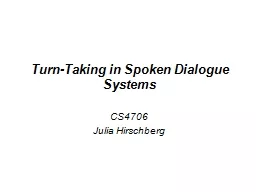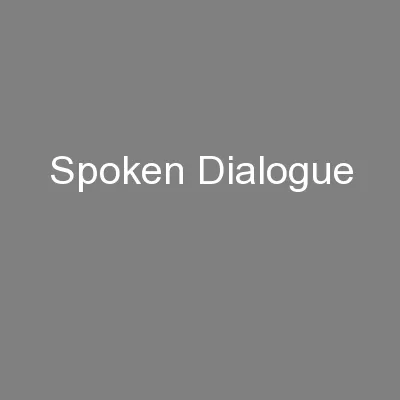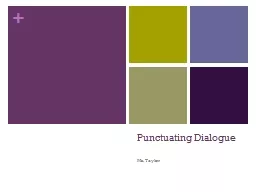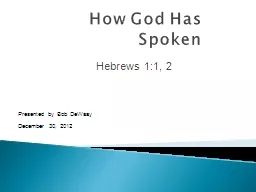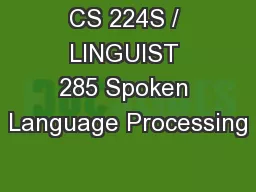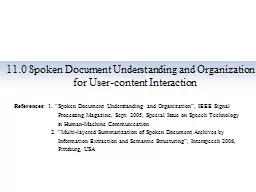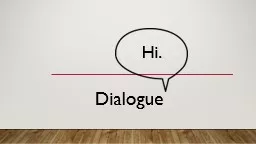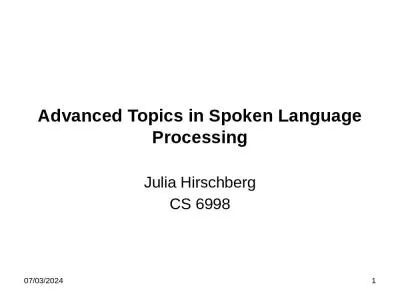PPT-Turn-Taking in Spoken Dialogue Systems
Author : mitsue-stanley | Published Date : 2016-03-19
CS4706 Julia Hirschberg Joint work with Agust ín Gravano In collaboration with Stefan Benus Hector Chavez Gregory Ward and Elisa Sneed German Michael Mulley With
Presentation Embed Code
Download Presentation
Download Presentation The PPT/PDF document "Turn-Taking in Spoken Dialogue Systems" is the property of its rightful owner. Permission is granted to download and print the materials on this website for personal, non-commercial use only, and to display it on your personal computer provided you do not modify the materials and that you retain all copyright notices contained in the materials. By downloading content from our website, you accept the terms of this agreement.
Turn-Taking in Spoken Dialogue Systems: Transcript
Download Rules Of Document
"Turn-Taking in Spoken Dialogue Systems"The content belongs to its owner. You may download and print it for personal use, without modification, and keep all copyright notices. By downloading, you agree to these terms.
Related Documents

